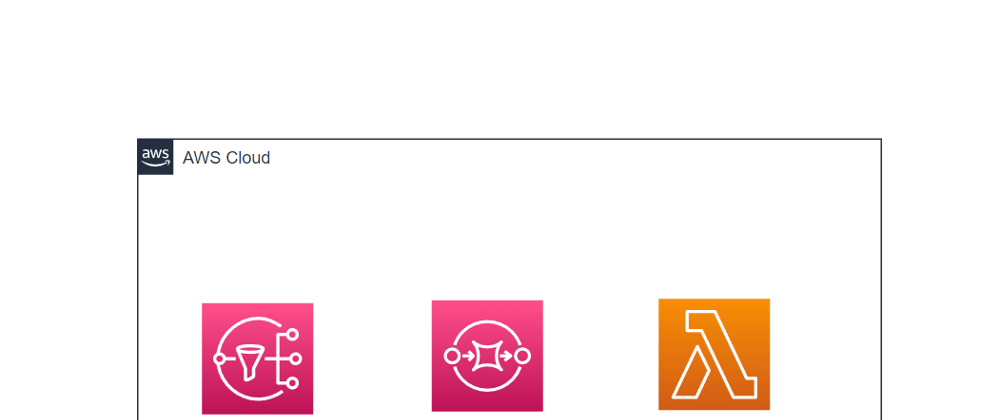Event-driven architectures are becoming increasingly popular in modern software development, and Amazon Web Services (AWS) provides several tools to implement this style of architecture. In this blog, we will discuss what event-driven architectures are, why they are useful, and how to implement them in AWS.
What is an event-driven architecture?
An event-driven architecture is a way of designing software systems in which events trigger specific actions. This means that different parts of the system can communicate with each other by sending and receiving events, rather than directly invoking each other's methods.
Why use event-driven architectures?
Event-driven architectures provide several benefits over traditional architectures:
Loose coupling: Event-driven architectures promote loose coupling between components, making it easier to change or replace parts of the system without affecting the rest of the system.
Scalability: Event-driven architectures are inherently scalable, as it's easy to add new components to respond to events without affecting existing components.
Real-time processing: Event-driven architectures allow for real-time processing of events, making it possible to respond to events as soon as they occur.
How to implement event-driven architectures in AWS?
AWS provides several tools that make it easy to implement event-driven architectures:
Amazon SNS (Simple Notification Service): SNS is a publish/subscribe messaging service that allows you to send messages to multiple recipients at once. You can use SNS to send events from one part of your system to another, and have multiple components subscribe to these events.
Amazon SQS (Simple Queue Service): SQS is a managed message queue service that provides reliable, scalable, and efficient message delivery. You can use SQS to queue events for processing, allowing you to decouple the parts of your system that produce events from the parts that process them.
AWS Lambda: Lambda is a serverless computing service that allows you to run code without having to manage servers. You can use Lambda to respond to events by triggering Lambda functions that perform specific actions in response to events.
Real world example
Here is a real-world example of an event-driven architecture using Terraform and AWS:
Suppose we have an e-commerce website that sells products. When a customer places an order, we want to send an email to the customer with a confirmation of the order, and we also want to update the inventory of the product that was ordered.
To implement this, we can use the following components:
Amazon S3: To store the Terraform code and the inventory data.
AWS Lambda: To run the code that sends the email to the customer and updates the inventory. We will use two separate Lambda functions for these tasks.
Amazon SNS: To send the events when an order is placed and when the inventory is updated.
Terraform: To automate the creation of the above components.
Here is the Terraform code for creating the SNS topic for order placement events:
resource "aws_sns_topic" "order_placed" {
name = "order_placed"
}
Next, we create the Lambda function that sends the email to the customer:
resource "aws_lambda_function" "send_email" {
filename = "send_email.zip"
function_name = "send_email"
role = "${aws_iam_role.lambda_exec.arn}"
handler = "index.handler"
runtime = "python3.8"
timeout = 30
environment = {
variables = {
SENDER = "${var.sender}"
RECIPIENT = "${var.recipient}"
}
}
events = [
{
sns = "${aws_sns_topic.order_placed.arn}"
}
]
}
And finally, the Terraform code for the Lambda function that updates the inventory:
resource "aws_lambda_function" "update_inventory" {
filename = "update_inventory.zip"
function_name = "update_inventory"
role = "${aws_iam_role.lambda_exec.arn}"
handler = "index.handler"
runtime = "python3.8"
timeout = 30
environment = {
variables = {
INVENTORY_BUCKET = "${var.inventory_bucket}"
}
}
events = [
{
sns = "${aws_sns_topic.order_placed.arn}"
}
]
}
In this example, when a customer places an order, an SNS event is sent to the order_placed topic. This event triggers both the send_email and update_inventory Lambda functions, which perform the actions of sending an email to the customer and updating the inventory, respectively.
This is a simple example of how Terraform and AWS can be used to build an event-driven architecture. By using Terraform, you can automate the creation and deployment of these components, making it easier to manage and scale your architecture as your needs change over time.
Conclusion
Event-driven architectures are a useful tool for designing modern software systems, and AWS provides several tools to make it easy to implement this style of architecture. By using tools such as SNS, SQS, and Lambda, you can build scalable, real-time systems that respond to events as soon as they occur.
This article was created with the help of AI







Latest comments (1)
Hey, this article seems like it may have been generated with the assistance of ChatGPT.
We allow our community members to use AI assistance when writing articles as long as they abide by our guidelines. Could you review the guidelines and edit your post to add a disclaimer?
Guidelines for AI-assisted Articles on DEV
Erin Bensinger for The DEV Team ・ Dec 19 '22 ・ 4 min read
Some comments have been hidden by the post's author - find out more